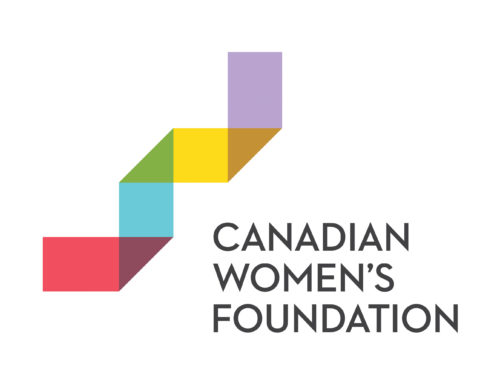Did you know that, if you’re a woman in Canada, it’s as if you’ve been working for free since the beginning of the year?
April 9 is Equal Pay Day. It marks how far women, on average, need to work into the new year to earn what men earned by December 31.
The gender pay gap is real, it can’t simply be chalked up to women’s choices, and it’s wider for women who face multiple forms of discrimination. While full-time working women in Canada face a 25 per cent gender pay gap on average, the gap is worse for women who face multiple forms of discrimination. According to data from Statistics Canada, Indigenous women face a 35 per cent pay gap, women with disabilities (who work part time and full time) face a 46 per cent pay gap, newcomer women face a 29 per cent pay gap, and racialized women face a 33 per cent pay gap.
What can we do to close the gender wage gap in Canada? We can learn from the bold steps some companies and governments have been taking.
1. Crunch and confront the numbers
For companies and employers to address the gender pay gap, auditing salary data is an important first step. And yet, in Canada, most firms aren’t monitoring gender pay gaps, or the gaps between women’s and men’s advancement to leadership roles.
At a few Canadian universities, salary audits have revealed gender pay discrepancies and prompted swift change. At the University of Guelph, for example, a salary review prompted the school to give about 300 women faculty members raises of $2,050 to address the gap. Charlotte Yates, the university’s provost, previously played a key role in a similar audit while working at McMaster University. Yates told the Globe and Mail she wants to continue working toward addressing inequities based on race and disability.
Large companies can take similar steps. In the U.S., two Salesforce executives, Cindy Robbins and Leyla Seka, approached CEO Marc Benioff about assessing the company’s own gender pay gap in 2015. He initially doubted it was an issue. But the numbers told a different story. “It was through the whole company, every department, every division, every geography,” Benioff said in an interview with 60 Minutes. Over the next few years, the company, which employs around 30,000 people, spent about $6 million addressing pay differences due to gender, race, and ethnicity.
2. Make workplace flexibility a priority
Workplace flexibility plays a key role in the pay gap, particularly if women choose to have children and then face competing expectations around their jobs, family care, and domestic work.
A case in point comes from a U.S. study on how the pharmacy profession evolved into a family-friendly occupation with a low gender pay gap. Researchers looked at how the pay gap ratio for full-time pharmacists went from .66 per cent in 1970 to .92 per cent in 2010. While pharmacists were traditionally self-employed professionals whose earnings depended on long hours, a host of structural changes in the industry made working conditions more flexible. “Pharmacists are better able to hand off clients because of uniform training, standardization of products, and extensive use of information technology,” says the report. Pharmacy is “probably the most egalitarian of all professions in the United States today.” While the specific combination of changes in the industry can’t necessarily be replicated, it’s worthwhile for companies and industries to look at what actions they can take to increase workplace flexibility.
Governments can also support flexible work arrangements. In Canada, a recent amendment to Canada’s Labour Code gives federally-regulated workers the right to request flexibility. Although employers can refuse on specific grounds, the amendment does provide an official process for negotiating the issue. In the U.K. and Australia, the right to request flexible work arrangements goes farther, extending to all workers, provided they meet certain criteria.
3. Put pay transparency on the agenda
Pay transparency grabbed the spotlight when stories surfaced about vast discrepancies in high-profile actors’ pay. But transparency needs to be addressed at every level of the pay scale in every profession. Some companies are making salary information accessible and seeing benefits, including increased diversity and employee motivation, as well as a lower pay gap.
The U.K. recently put legislation in place to increase pay transparency. Companies in the public, private, and volunteer sector with more than 250 employees (around a third of all companies) have to disclose average compensation for men and women. And that legislation helped to reveal some Canadian companies operating offices in the U.K. indeed had significant gender pay gaps.
Iceland has gone the farthest, making it a criminal offense—with penalties—for companies not to address pay gaps that are revealed through independent audits. Though many jurisdictions have equal pay legislation, in most places it’s up to the employee to prove there’s a gap. Iceland’s approach shifts responsibility to the company. The Icelandic Government has also shown its commitment to closing the gender pay gap by setting a deadline of 2022.
Meanwhile, Canada has made some promising steps. The 2018 federal budget allocated $3 million over 5 years to increase pay transparency in federal sector jobs.
And in early 2018, the Ontario Government passed legislation on pay transparency that would have made it the first province to require job postings to indicate a salary range, prohibit employers from asking about past compensation, not penalize employees for discussing compensation, and require employers at large companies to track and report pay gaps. But, late in 2018, the newly elected provincial government delayed the implementation of those measures and says it is gathering feedback on how companies would implement transparency reporting.
What Can I Do About Equal Pay Now?
1. Send this letter to your local MPP, urging them to take action on issues including pay transparency, affordable and accessible childcare, increased minimum wage, and equitable workplace policies and practices.
2. Donate to support programs that empower women in Canada on their journeys out of poverty.
When there’s no need for us to observe Equal Pay Day in Canada, we’ll truly have something to celebrate!







